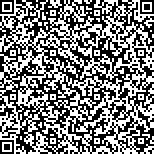下载中心
优秀审稿专家
优秀论文
相关链接
摘要

地表温度是区域和全球尺度地表物理过程的一个重要参数,目前已有的地表温度产品空间分辨率较低,缺乏高空间分辨率的地表温度产品。Landsat系列卫星提供了大量免费的高空间分辨率遥感数据,然而对应的高空间分辨率地表温度产品还未见到,为了获取长时间序列的高空间分辨率地表温度数据,针对Landsat 8 TIRS数据提出了一个物理单通道地表温度反演算法。该算法首先利用ASTER全球地表发射率产品(ASTER GED)结合Landsat 8地表反射率产品计算Landsat 8影像的地表发射率,然后利用快速辐射传输模型RTTOV结合MERRA大气廓线数据对热红外影像进行大气校正,最后利用物理单通道地表温度反演算法得到地表温度。利用黑河流域HiWATER试验2013年-2015年15个站点的实测地表温度数据对本文方法和普适性单通道算法进行了验证,同时对验证站点的空间异质性进行了分析。结果表明,本文方法和普适性单通道算法估算的地表温度整体精度均较高,能够获取高精度、高空间分辨率的地表温度数据,可以服务于城市热岛效应、地表蒸散发估算等相关研究。
Land Surface Temperature (LST) is an important parameter in land surface physical processes in regional and global scales. LST plays an crucial role in the interaction and energy exchanges between the atmosphere and land. LST has been widely used in weather forecasting, ocean circulation, drought monitoring, and energy balance. At present, the spatial resolution of LST products is relatively low, which can no longer meet the demand for monitoring urban heat island and estimating regional evapotranspiration. Landsat satellites offer numerous high-spatial-resolution data of land surface. However, an operational Landsat8 LST product is unavailable, thereby limiting the use of the data. In this study, we developed a physical single-channel algorithm to retrieve LST from Landsat 8 TIRS database, which can be used for retrieving Landsat LST with long time series.
A physical single channel algorithm was developed to retrieve the LST from Landsat 8 TIRS data. First, ASTER Global Emissivity Database and vegetation cover method were used to calculate the land surface emissivity. Then, MERRA reanalysis data and fast radiative transfer model RTTOV 11.3 were utilized for atmospheric correction of Landsat8 thermal infrared images. The validation results were divided into two parts:(1) validation using the simulated data and (2) validation based on the ground measured data. First, simulation data calculated by TIGR atmospheric profile and MODTRAN were used to validate the accuracy of the algorithm, and the in situ LSTs between 2013 and 2015 acquired from the HiWATER experiment were used to evaluate Landsat LST.
The transmittance and atmospheric upward radiance simulated by RTTOV are close to those of MODTRAN. The mean bias of transmittance between RTTOV and MODTRAN is approximately 0.01, and that for atmospheric upward radiance is approximately 0.04 W/(m2·sr·μm). Compared with the NDVI threshold method, the proposed method can both reflect the dynamic change trend of land surface emissivity over vegetations and reflect the variation among different soil types. The validation results show that the overall deviation for both PSC algorithm and JMS method is within ±0.2 K. Moreover, the RMSE of the PSC algorithm is around 2.2 K, whereas that for JMS algorithm is 2.4 K. LST with high spatial resolution and precision could be obtained using the proposed method for monitoring urban heat island and estimating regional evapotranspiration.

